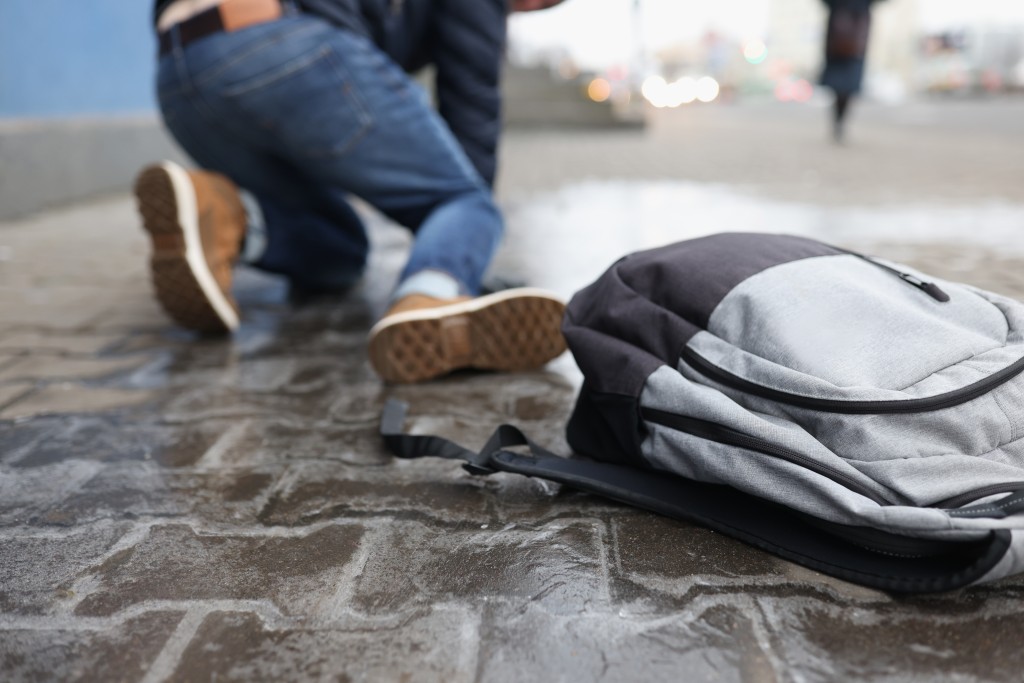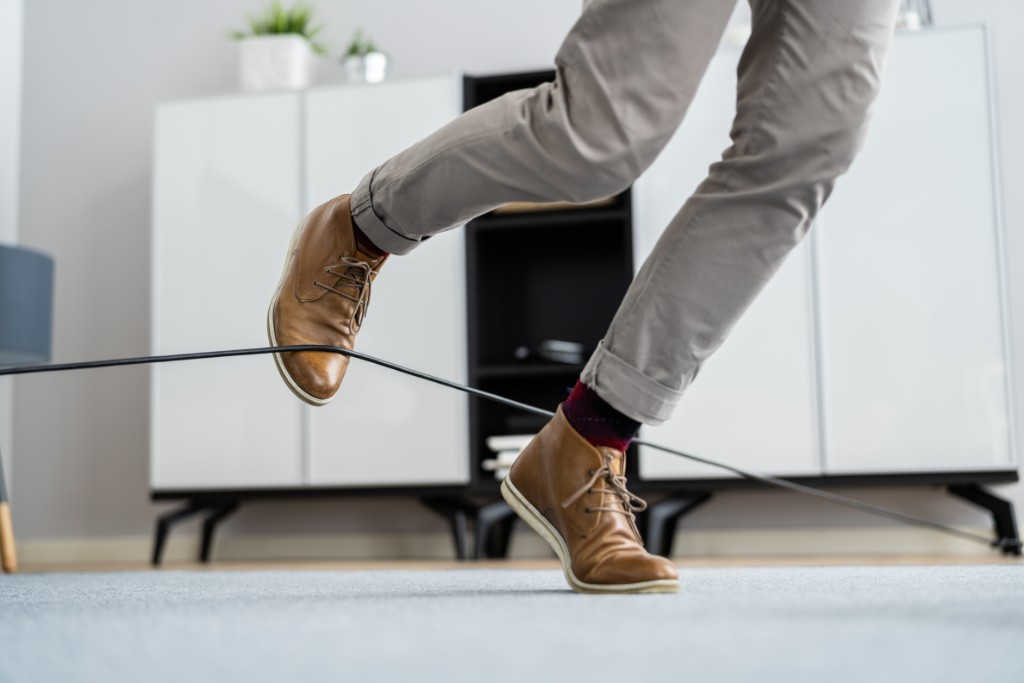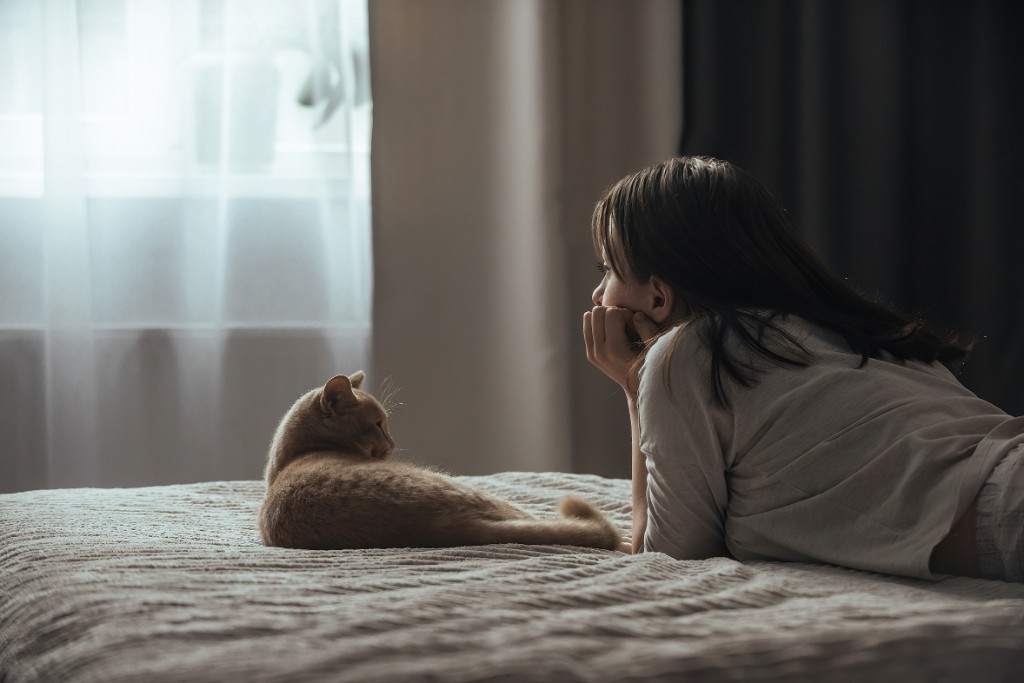April 30, 2025 | slip and fall accident Claims
Proving Negligence in an Alberta Slip-and-Fall Case
Table of Contents
During our lifetime, we all have falls. Most are minor and result in no injuries. Unfortunately for some people, a slip and fall could instead have life-changing consequences. It could be a broken bone, torn ligaments, or a concussion. These types of injuries can lead to a reduced income because you miss work or need to switch jobs. If you slipped and suffered serious injuries, you may be entitled to damages for your loss. This article discusses slips that occur on commercial property, such as at a store.
If you have suffered a serious slip and fall (or trip and fall) and are curious about your legal options, please contact us at Preszler Injury Lawyers for a free consultation by calling 1-888-494-7191.
Navigating Alberta’s Occupiers’ Liability Laws
The obligations of a business to provide a safe place, or premises, for visitors in Alberta are set out in a law called the Occupiers’ Liability Act. Under this law, the “occupier”, which can mean the company doing business in the building or the landlord, has a duty to take reasonable steps to make sure that the premises is reasonably safe for a “visitor”.
The condition of the premises is central to most slip and fall cases. Liquids in the store and ice in the parking lot are the probable cause. The occupier has a duty to address known dangers on their property with a system in inspection and maintenance.
Even if there was a slipping hazard in the store, the occupier can still avoid responsibility for your injuries if the occupier can show it took all reasonable steps to prevent the slipping hazard. In other words, occupiers are not held to the standard of perfection. They just need to take reasonable steps to keep the premises free of hazards.
When are Property Owner’s Negligent in Slip and Fall Claims?
The first step towards proving negligence is proving the existence of the ”hazard” that caused the fall. The hazard could be just about anything that should not reasonably be expected to be found on the premises. It can be a pool of water by the checkout lanes in the store, any icy parking lot that has not been salted or sanded, or a wooden pallet that is sticking out in an area where visitors are expected to walk. What is considered a hazard depends on the circumstances.
Proper identification of the hazard is critical to a successful claim.
Evidence That Can Strengthen Your Slip-and-Fall Claim in Alberta
It can be challenging to successfully argue a slip-and-fall claim. Gathering the right evidence is very important.
The most important evidence is often photographs, or video, of the hazard. Ideally, pictures are taken immediately after the fall. That is not always possible because taking pictures is not the priority of someone seriously injured. If you can take pictures of the hazard, try to do so from different angles and distances to show the location of the hazard within the store and how it put visitors at risk.
If you slip on ice or on a slippery substance, such as water, be sure to take pictures of your footwear, especially the soles of the footwear. You can expect the insurance company to ask for evidence of your footwear, so take some pictures as soon as possible.
If you fall on commercial property, whether inside or outside the store, do your best to report the fall to someone in the store and file an incident report. When reported it is far more likely for the store to maintain video of the incident. Try to get the names of the employees you talked to. A report will help establish that a fall happened, and the employees may take pictures of the hazard if you were unable to do so.
If anyone witnessed your fall, try and get their name and contact information. Not everyone wants to be involved with a potential lawsuit, so do not be offended if the potential witness declines to get involved. But there is no harm in asking.
Role of Witness Testimonies and Maintenance Records in Proving Fault
If you can prove that the premises was unsafe and that the unsafe condition caused you harm, the occupier can still avoid liability. To do this, the occupier must prove that it took reasonable care to have a system to keep the premises reasonably safe from dangers, and that it followed that system.
To prove its system, the occupier will typically have to rely on written policies, procedures and logbooks. The policies and procedures should show what kinds of maintenance and the frequency of maintenance that the occupier believed were necessary to keep the premises safe for visitors. Experienced legal counsel can review the policies to determine whether they are sufficient to reasonably protect visitors.
If the policies are sufficient, then the occupier must provide logbooks/maintenance records to show that the maintenance was done consistently with the policies. The occupiers’ employees may need to be witnesses to prove that they were aware of the policies and followed them.
If the logbooks are incomplete or have inconsistent entries, which is a risk because usually many different employees are performing maintenance, then the occupier may have a difficult time proving that it took the steps necessary to keep its premises safe for visitors.
How Expert Opinions Can Support Your Negligence Case
Expert opinions are often needed to prove what injuries you have suffered and that the injuries were caused by the fall. The expert opinions will also testify to what kinds of medical treatment you may need in the future. These opinions are then used to help decide what damages we can reasonably pursue.
There may also be a need for an engineering expert opinion if the hazard is a structural defect or design failure.
Contact Our Calgary Slip and Fall Lawyers for Legal Assistance
Have you slipped or tripped and fallen on someone else’s property? Call us at 1-888-494-7191 to schedule a free initial consultation with a member of our Alberta legal team. Once we have learned about your falling accident, we can detail your options for recovering damages and guide you through the rest of the claims process as your counsel if desired.
Written by Michael Gemmiti
Personal Injury Lawyer
Lawyer Michael Gemmiti’s practice focuses on personal injury claims, including motor vehicle accident claims, slip and fall claims, and long-term disability claims.
More slip and fall accident Topics
Here’s more information on slip and fall accident related topics that we think you might find helpful.

slip and fall accident
|
December 13, 2024
When to Contact a Calgary Slip and Fall Lawyer After a Slip and Fall Accident
Almost all of us can remember a slip and fall or trip and fall accident in our lives. In the best cases, you experienced minimal…

slip and fall accident
|
November 29, 2024
Differences Between Slip and Fall and Trip and Fall Injuries
“Slips and falls” generally refer to someone falling due to a slippery substance, like ice or snow on stairs, a parking lot, or a walkway,…

slip and fall accident
|
December 28, 2023
Mental Health in Alberta: A Guide to Seasonal Affective Disorder and Long Term Disability Claims
The cold winter months in Alberta bring with them unique challenges that can be difficult for anyone to manage, namely the lack of sunlight. The…
Speak With Our
Legal Team for FREE
Find Out if You Have a Case in Under 5 Minutes
Speak to a Lawyer Now!
We’re here to help.
